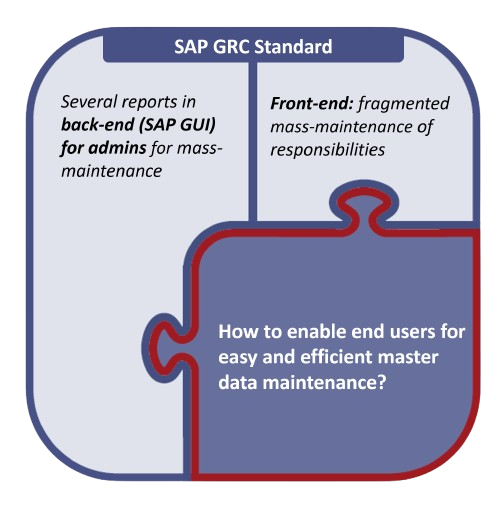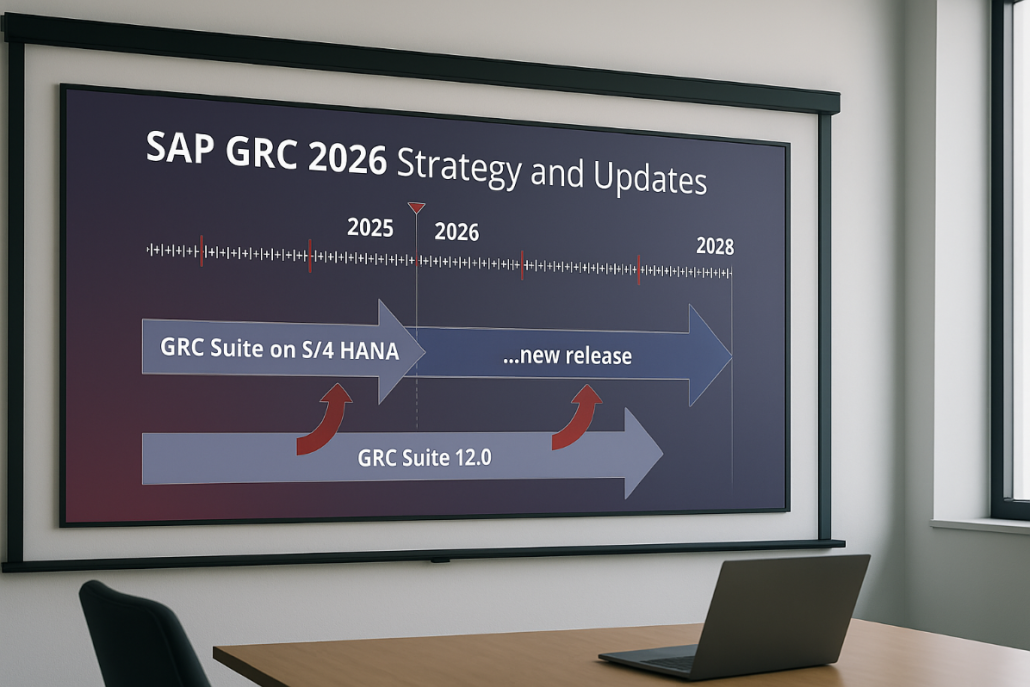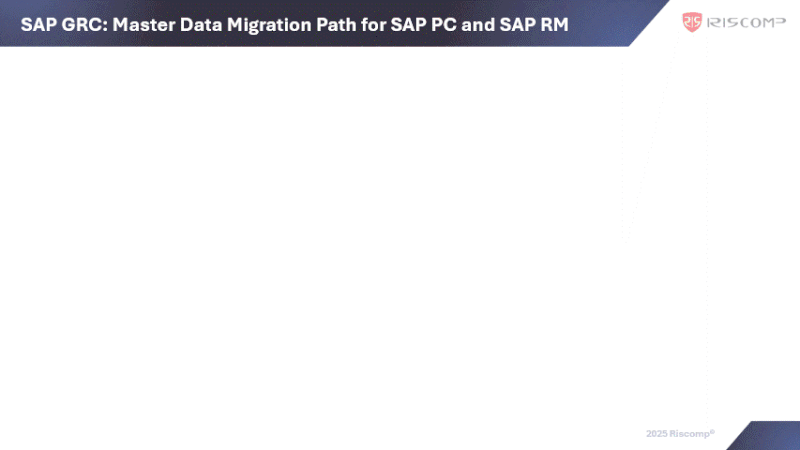Efficient master data handling is key to success of a GRC initiative. How can SAP GRC customers strike the right balance between the needs to keep framework up to date and consistent, being less dependent on expert support, and also being able to migrate complete master data if required?
In this article, we would like to explore SAP GRC capabilities, key challenges, and a strategic approach in the area of Master Data governance.
What does SAP GRC offer for master data updates?
#1. Back end reports. Most customers restrict end users, including central GRC team, from accessing back end (SAP GUI). Due to this, and also due to relatively high complexity the handling of the following update programs is mostly residing with GRC experts from IT team:
- Upload Central Data GRFN_MDUG (Snote 2213122): used to update templates or central data such as ICS risks, processes, sub-processes, controls, assignments of risks to sub-processes and controls, regulation mappings, test plans, and their assignments.
- Mass-assign Subprocesses GRFN_MASS_ASGN: allows the mass assignment of individual subprocesses to organizational units.
- Upload of Control Performance Steps GRFN_CTRL_PERF: especially relevant for customers using Manual Control Performance (MCP) workflow. Many organizations maintain control-specific performance plans — and without tooling support, the mass creation and update of performance steps becomes a nightmare. This report significantly simplifies the process and is essential for customers working with MCP.
- CCM: Business Rule – Control Assignment GRFN_BRA: for customers deploying automated controls in Continuous Control Monitoring (CCM), this report enables the mass assignment of business rules to controls. While such assignments can be done manually in the front end, it’s a tedious task — and this ABAP report makes it possible to perform them in bulk.
There are few older synchronization reports, originating from the time when in older SAP GRC releases the Field Based Configuration was not available yet:
- GRPC_SUBPROCESS_SYNCHRONIZE: Synchronize central controls with copied controls.
- GRPC_PSTEP_SYNCHRONIZE: Control Attributes synch.
- GRPC_RISK_SYNCHRONIZE: Synchronize Risks (Assignments, Name and Description).
These tools support efficient initial setup and technical updates — but they are designed for administrators, not business users.

#2. In many organizations, GRC-related master data is maintained by functional teams who work primarily in the front end — not in the SAP GUI. Access to back-end tools is often limited to IT administrators, while day-to-day maintenance tasks are expected to be handled through web-based applications.
However, front-end capabilities for mass updates remain limited:
- No mass-maintenance for local controls or referencing relations.
- Responsibilities: several options, depending on the type of maintenance.
- In SAP Risk Management, there is an Excel-based capability to mass update risks using structured templates — allowing centralized updates of risk attributes, such as name, category, or owner.
Here is one more challenge: ability to – migrate complete master data
Some customers have to do it due to various reasons – systems consolidation e.g. In the context of upcoming new version of SAP GRC 2026, the need to migrate master data becomes even more important: SAP’s GRC 2026 strategy focuses exclusively on the S/4HANA version of GRC. The new release will be available only for systems based on the S/4HANA foundation, while the current release (for SAP Business Suite) will be supported only until the end of 2026.
As a result, many customers are facing a strategic decision:
- whether to consolidate their systems
- and possibly bring GRC into their core S/4HANA landscape
In both cases, migrating existing GRC master data becomes essential.

Сhallenges in the nutshell:
Standing SAP GRC customers, but also SAP customers preparing to implement or to upgrade to GRC v. 2026 face some significant challenges:
- If a migration is planned, how can all GRC Master Data be seamlessly transferred?
- How can an efficient and intuitive GRC framework governance can be established – for ongoing changes, consistency and quality checks?
The Solution: Framework Update Add-On
This is exactly where the SAP-certified Framework Update Add-On comes into play, which was originally developed by Riscomp 8 years ago, and which is used by many large SAP GRC customers.
It was developed to extend SAP GRC with intuitive, front-end apps that allow decentralized, compliant, and intuitive master data maintenance. It also makes the migration of complete master data feasible – in combination with other standard tools.
Migration path for Master Data in SAP GRC
How a data migration process for SAP Process Control and SAP Risk Management looks like? We have prepared migration path overview for you, the sequence of steps is as follows:
- Start with GRFN_MDUG to upload central master data
- Use GRFN_MASS_ASGN to assign sub processes
- Transfer local data using the Framework Update Apps:
- My Control Maintenance: Mass update and creation of controls, risk assignment, and other changes based on customizable templates.
- My User Maintenance: Assignment, delimitation, and replacement of users within the GRC Framework and Roles to ensure responsibility consistency.
- My Control Referencing: Management of shared services relations to reduce efforts in testing, assessments, and reporting within ICS.
- Conclude with CCM assignments via GRFN_BRA, if needed.

More information
We highly recommend watching our joint webinar with SAP: “Master Data Governance in SAP GRC – Best Practice and GRC v. 2026 Considerations.” In this expert session, SAP shared important updates on GRC v. 2026. It also elaborates on best practice approaches for effective master data management, showing how organizations can keep their framework consistent and up to date, reduce reliance on expert support, and enable complete master data migration when needed.
Need help optimizing your master data strategy — or preparing for GRC 2026?
Contact us to explore how we can support your journey. Let’s make your GRC data ready for what’s next!
